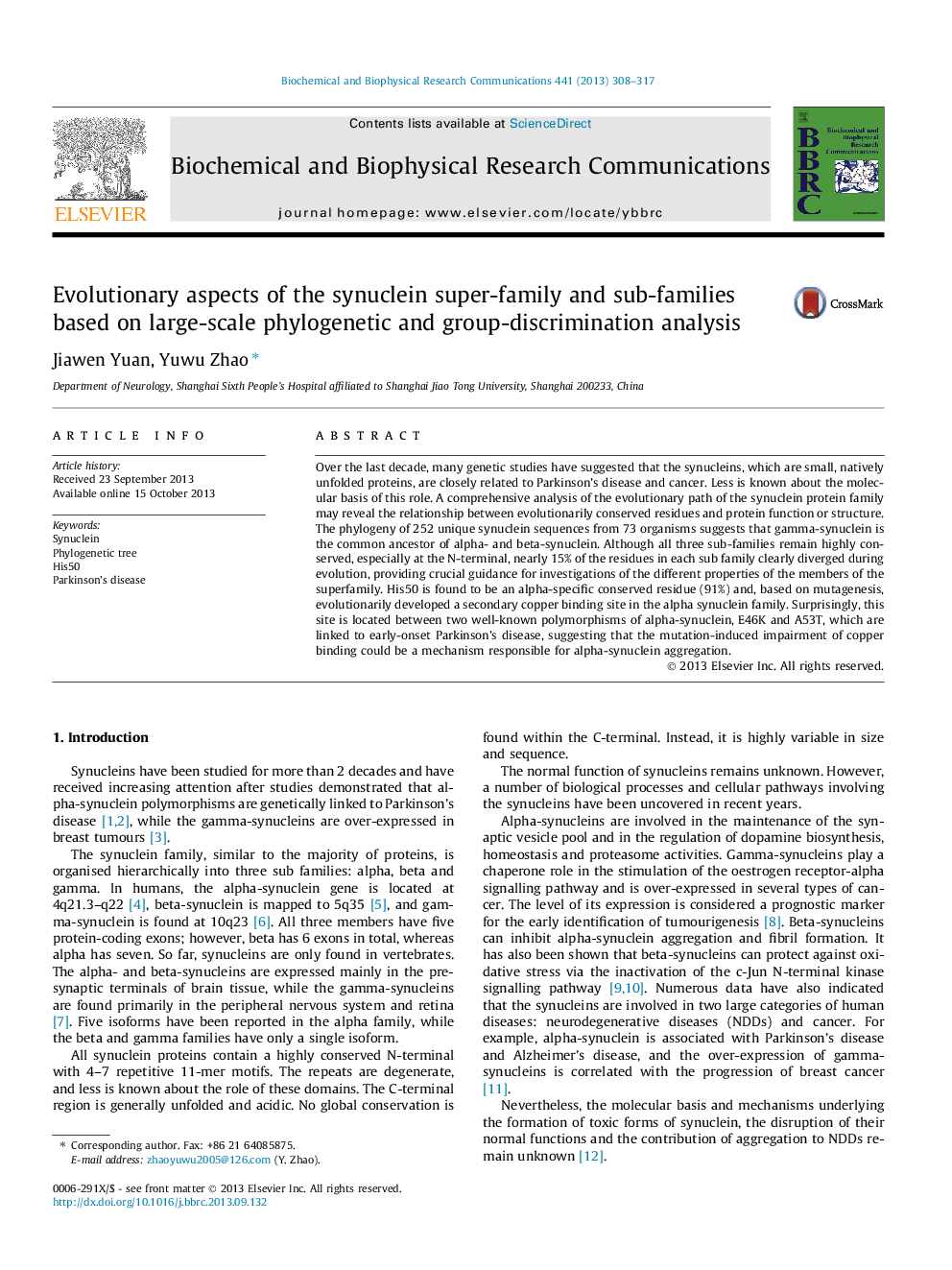| کد مقاله | کد نشریه | سال انتشار | مقاله انگلیسی | نسخه تمام متن |
|---|---|---|---|---|
| 10757198 | 1050393 | 2013 | 10 صفحه PDF | دانلود رایگان |
عنوان انگلیسی مقاله ISI
Evolutionary aspects of the synuclein super-family and sub-families based on large-scale phylogenetic and group-discrimination analysis
ترجمه فارسی عنوان
جنبه های تکاملی سوپریم خانواده سینوکلین و زیر خانواده ها بر اساس تجزیه و تحلیل جدایی فیلوژنتیک و گروهی در مقیاس وسیع
دانلود مقاله + سفارش ترجمه
دانلود مقاله ISI انگلیسی
رایگان برای ایرانیان
کلمات کلیدی
موضوعات مرتبط
علوم زیستی و بیوفناوری
بیوشیمی، ژنتیک و زیست شناسی مولکولی
زیست شیمی
چکیده انگلیسی
Over the last decade, many genetic studies have suggested that the synucleins, which are small, natively unfolded proteins, are closely related to Parkinson's disease and cancer. Less is known about the molecular basis of this role. A comprehensive analysis of the evolutionary path of the synuclein protein family may reveal the relationship between evolutionarily conserved residues and protein function or structure. The phylogeny of 252 unique synuclein sequences from 73 organisms suggests that gamma-synuclein is the common ancestor of alpha- and beta-synuclein. Although all three sub-families remain highly conserved, especially at the N-terminal, nearly 15% of the residues in each sub family clearly diverged during evolution, providing crucial guidance for investigations of the different properties of the members of the superfamily. His50 is found to be an alpha-specific conserved residue (91%) and, based on mutagenesis, evolutionarily developed a secondary copper binding site in the alpha synuclein family. Surprisingly, this site is located between two well-known polymorphisms of alpha-synuclein, E46K and A53T, which are linked to early-onset Parkinson's disease, suggesting that the mutation-induced impairment of copper binding could be a mechanism responsible for alpha-synuclein aggregation.
ناشر
Database: Elsevier - ScienceDirect (ساینس دایرکت)
Journal: Biochemical and Biophysical Research Communications - Volume 441, Issue 2, 15 November 2013, Pages 308-317
Journal: Biochemical and Biophysical Research Communications - Volume 441, Issue 2, 15 November 2013, Pages 308-317
نویسندگان
Jiawen Yuan, Yuwu Zhao,
